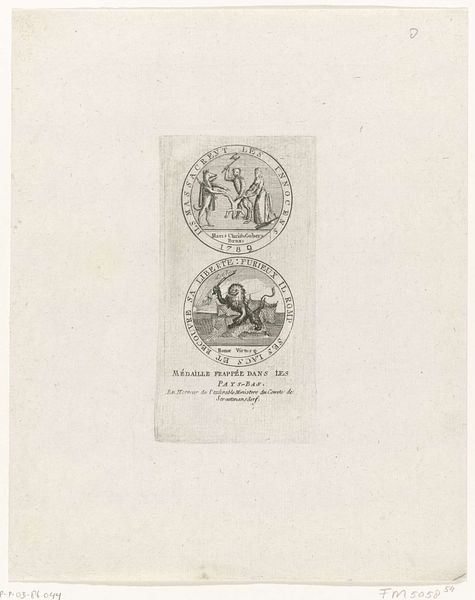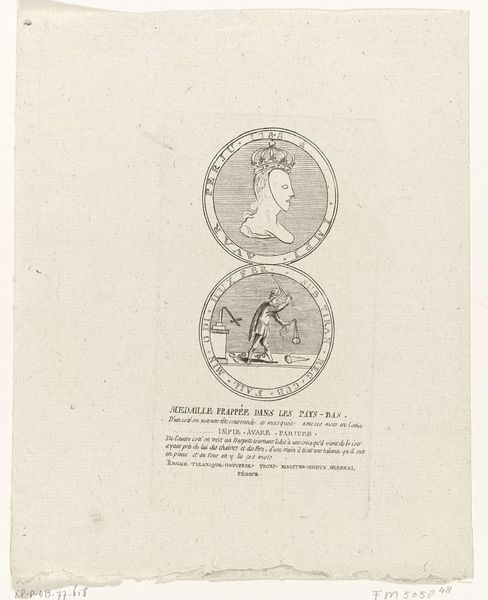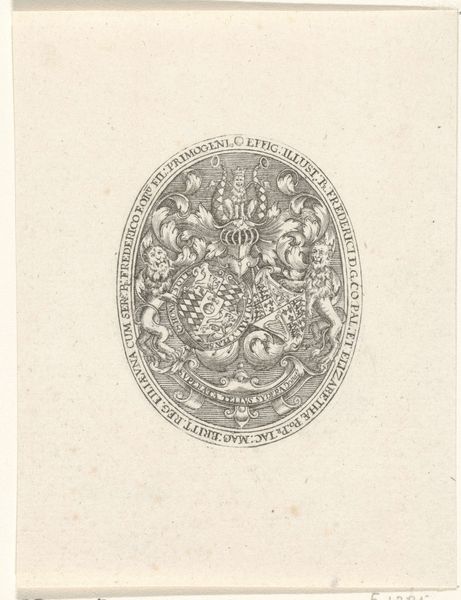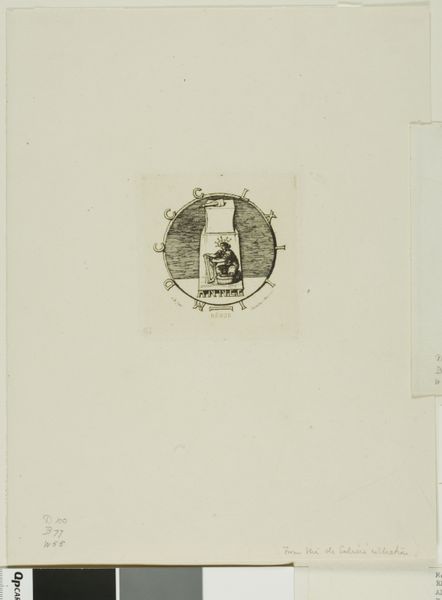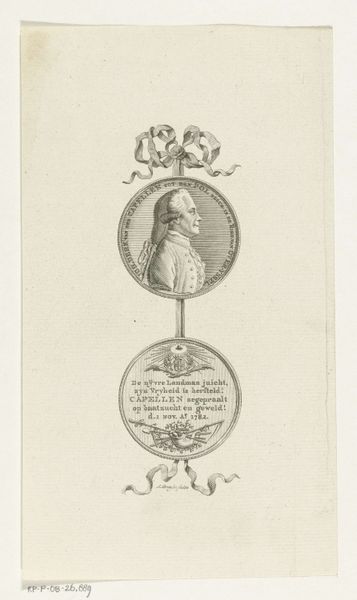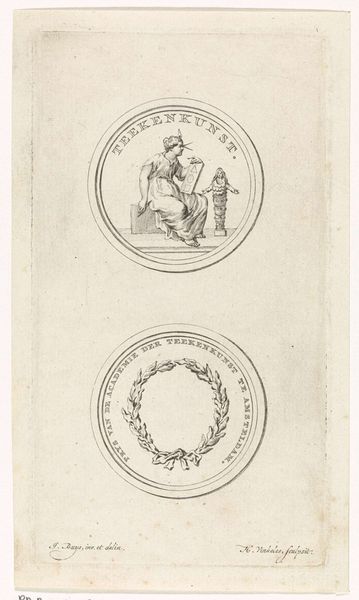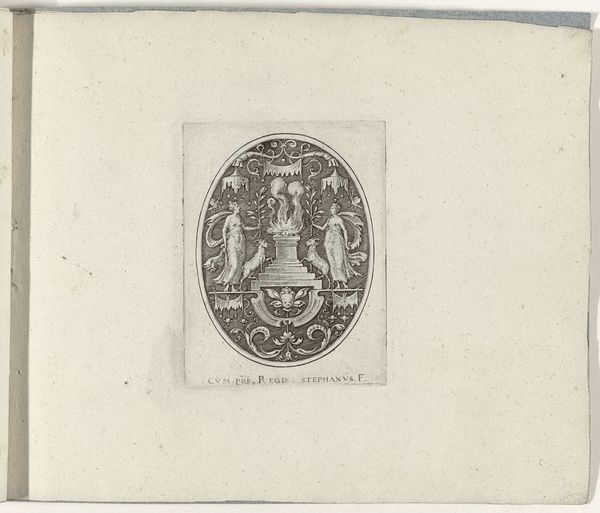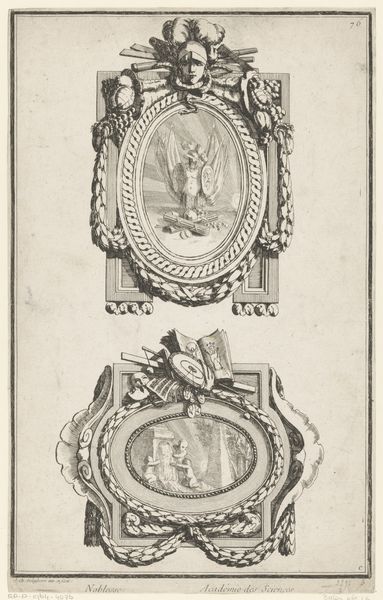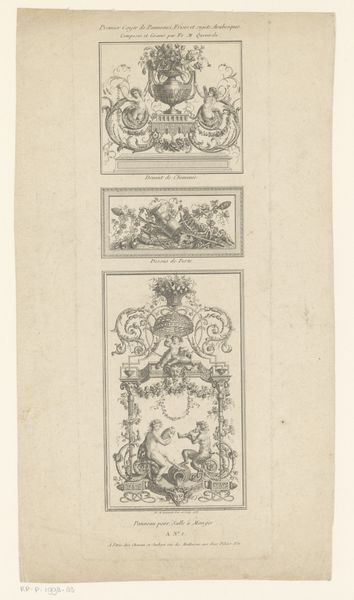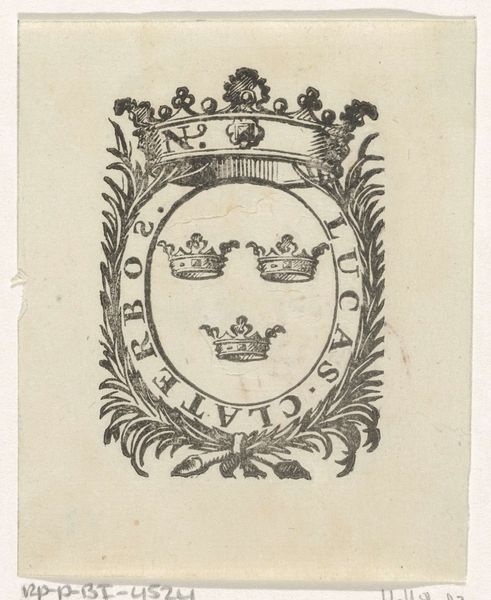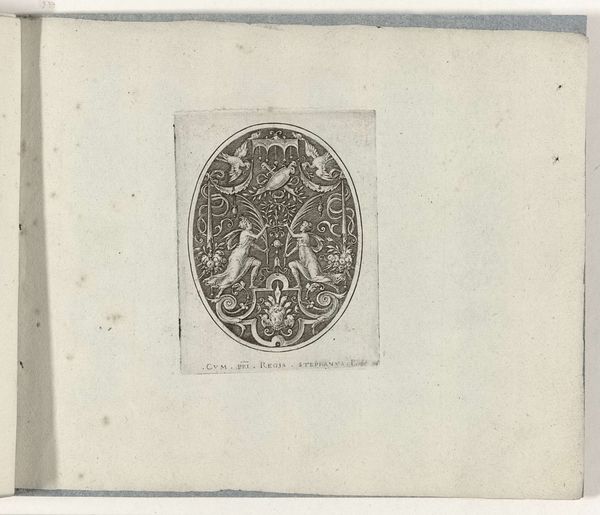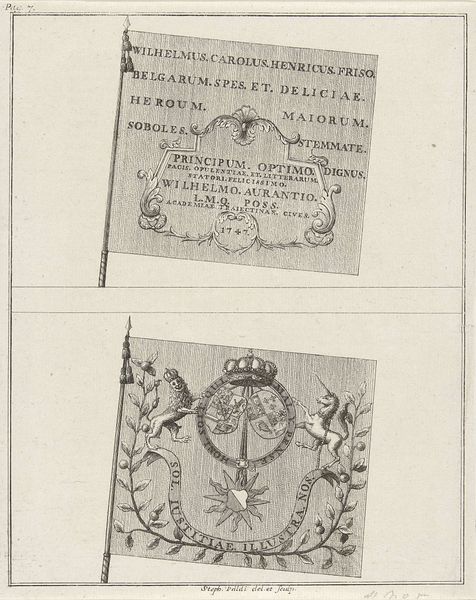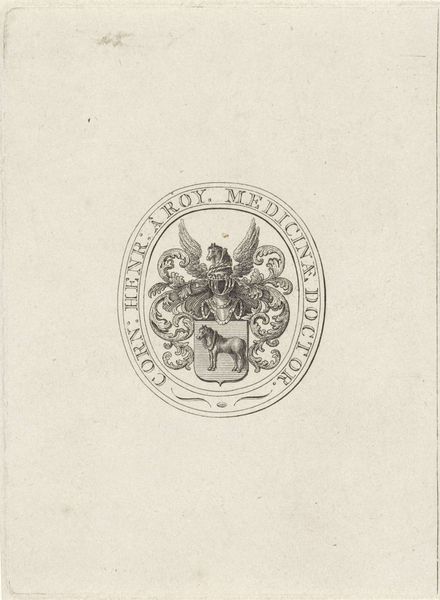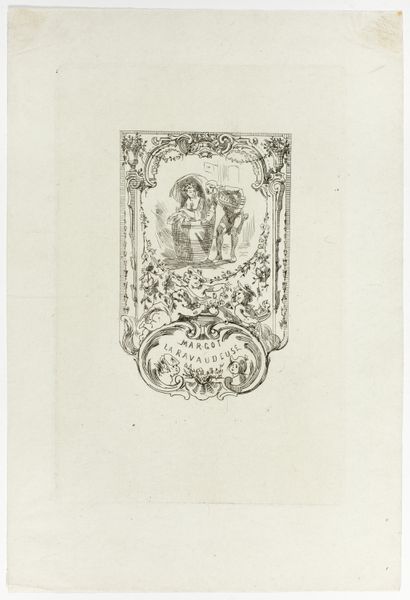
print, engraving
#
allegory
# print
#
old engraving style
#
classical-realism
#
geometric
#
classicism
#
line
#
history-painting
#
engraving
Dimensions: height 160 mm, width 88 mm
Copyright: Rijks Museum: Open Domain
Curator: This is an engraving from the late 1780s, "Penning tegen Jozef II," created by an anonymous artist. The Rijksmuseum houses it now. Editor: It’s stark, isn’t it? High contrast, a real sense of tension conveyed through the sharp lines. The detail in such a small format is impressive, a grim precision. Curator: Indeed. What we see are actually two separate circular designs stacked one atop the other. Both use allegorical figures to critique Emperor Joseph II, particularly regarding conflicts in the Austrian Netherlands. Note how prints like this circulated widely, shaping public opinion through accessible imagery and text. Editor: The upper image depicts what? Is that tyranny being overthrown? It feels very revolutionary given the broader historical context with its clear references to violent revolt. Who is depicted there? Curator: Yes, precisely. It visualizes the events of 1583, featuring figures personifying Liberty overthrowing Tyranny represented as a lion. The lower section alludes to the Emperor offering Justice a broken wreath while treading on a decapitated head. Symbolically rich in materials and printing press to address injustice. Editor: The act of making and disseminating prints itself became an act of resistance. Considering who consumed these works—were they aimed at an elite audience or more general public to mobilize against the regime? Curator: More general consumption, absolutely. The use of vernacular language in addition to symbolic visual components helped democratize this message and ensured greater outreach across society. The lines are distinct and well-designed in order for the message to be conveyed. Editor: So it functioned almost like propaganda then. This makes me rethink art and production - beyond just decoration but powerful visual tools employed amidst socio-political tensions...it reveals more complex intersectional readings concerning those in authority abusing citizens. It wasn't just about documenting events though? Curator: Not just documentation at all! It represents the people's active role against oppressive rule as engraved permanently with the etching. The method of production, that accessibility of the engraved imagery really enabled active resistance against an empire at that period... This medium in itself reveals a powerful truth about those tensions throughout the social-political sphere during the Emperor's time of service... Editor: Such an act to undermine with imagery! Next time I observe it in depth I might have to do a deeper delve on my next exploration! Curator: A small image that reflects a tumultuous moment and reveals how social anxieties and power relations play out! It makes you rethink the materials utilized along with the people, power, politics and process involved.
Comments
No comments
Be the first to comment and join the conversation on the ultimate creative platform.
